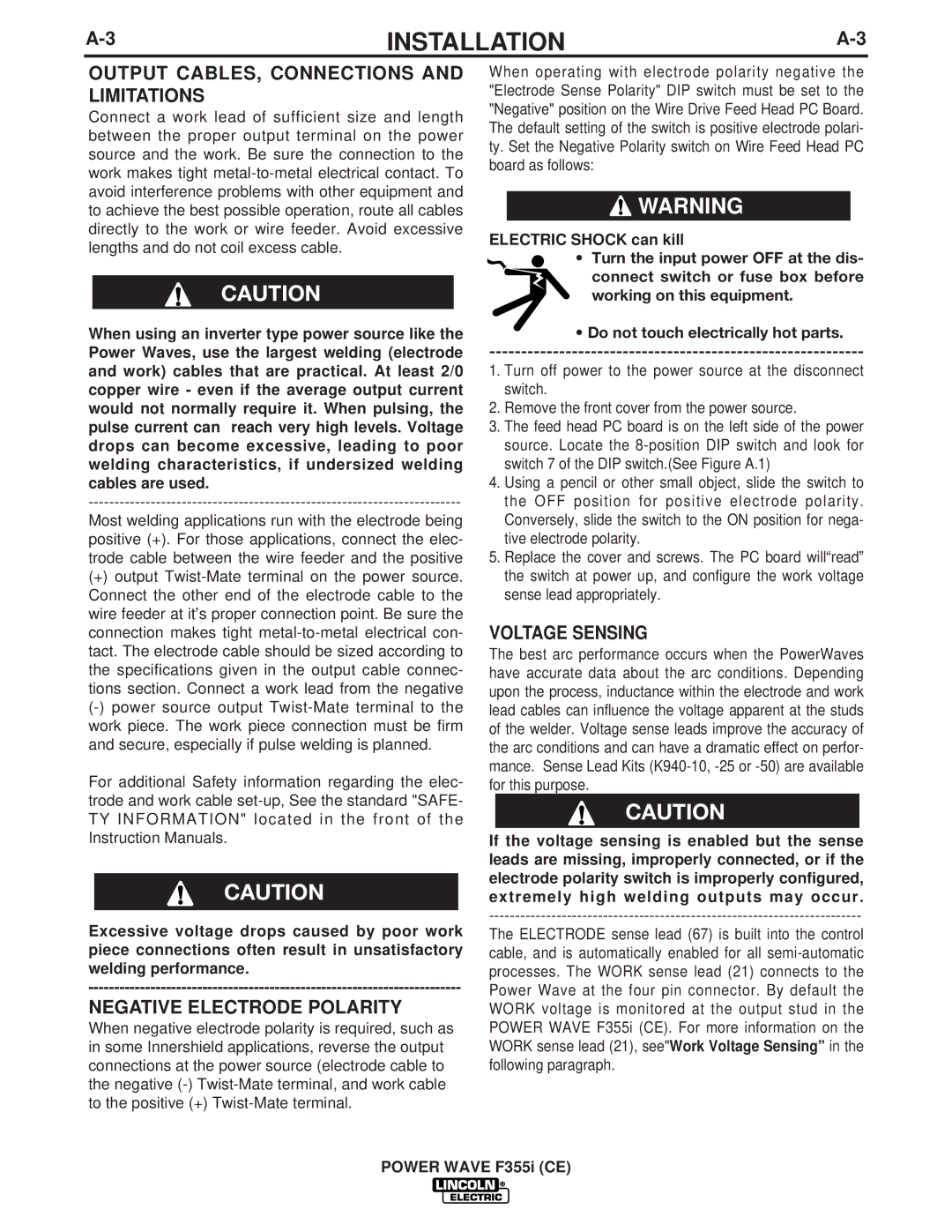
INSTALLATION | ||
|
|
|
OUTPUT CABLES, CONNECTIONS AND LIMITATIONS
Connect a work lead of sufficient size and length between the proper output terminal on the power source and the work. Be sure the connection to the work makes tight
CAUTION
When using an inverter type power source like the Power Waves, use the largest welding (electrode and work) cables that are practical. At least 2/0 copper wire - even if the average output current would not normally require it. When pulsing, the pulse current can reach very high levels. Voltage drops can become excessive, leading to poor welding characteristics, if undersized welding cables are used.
Most welding applications run with the electrode being positive (+). For those applications, connect the elec- trode cable between the wire feeder and the positive
(+)output
For additional Safety information regarding the elec- trode and work cable
CAUTION
Excessive voltage drops caused by poor work piece connections often result in unsatisfactory welding performance.
NEGATIVE ELECTRODE POLARITY
When negative electrode polarity is required, such as in some Innershield applications, reverse the output connections at the power source (electrode cable to the negative
When operating with electrode polarity negative the "Electrode Sense Polarity" DIP switch must be set to the "Negative" position on the Wire Drive Feed Head PC Board. The default setting of the switch is positive electrode polari- ty. Set the Negative Polarity switch on Wire Feed Head PC board as follows:
![]() WARNING
WARNING
ELECTRIC SHOCK can kill
• Turn the input power OFF at the dis- connect switch or fuse box before working on this equipment.
•Do not touch electrically hot parts.
1.Turn off power to the power source at the disconnect switch.
2.Remove the front cover from the power source.
3.The feed head PC board is on the left side of the power source. Locate the
4.Using a pencil or other small object, slide the switch to the OFF position for positive electrode polarity. Conversely, slide the switch to the ON position for nega- tive electrode polarity.
5.Replace the cover and screws. The PC board will“read” the switch at power up, and configure the work voltage sense lead appropriately.
VOLTAGE SENSING
The best arc performance occurs when the PowerWaves have accurate data about the arc conditions. Depending upon the process, inductance within the electrode and work lead cables can influence the voltage apparent at the studs of the welder. Voltage sense leads improve the accuracy of the arc conditions and can have a dramatic effect on perfor- mance. Sense Lead Kits
CAUTION
If the voltage sensing is enabled but the sense leads are missing, improperly connected, or if the electrode polarity switch is improperly configured, extremely high welding outputs may occur.
The ELECTRODE sense lead (67) is built into the control cable, and is automatically enabled for all
